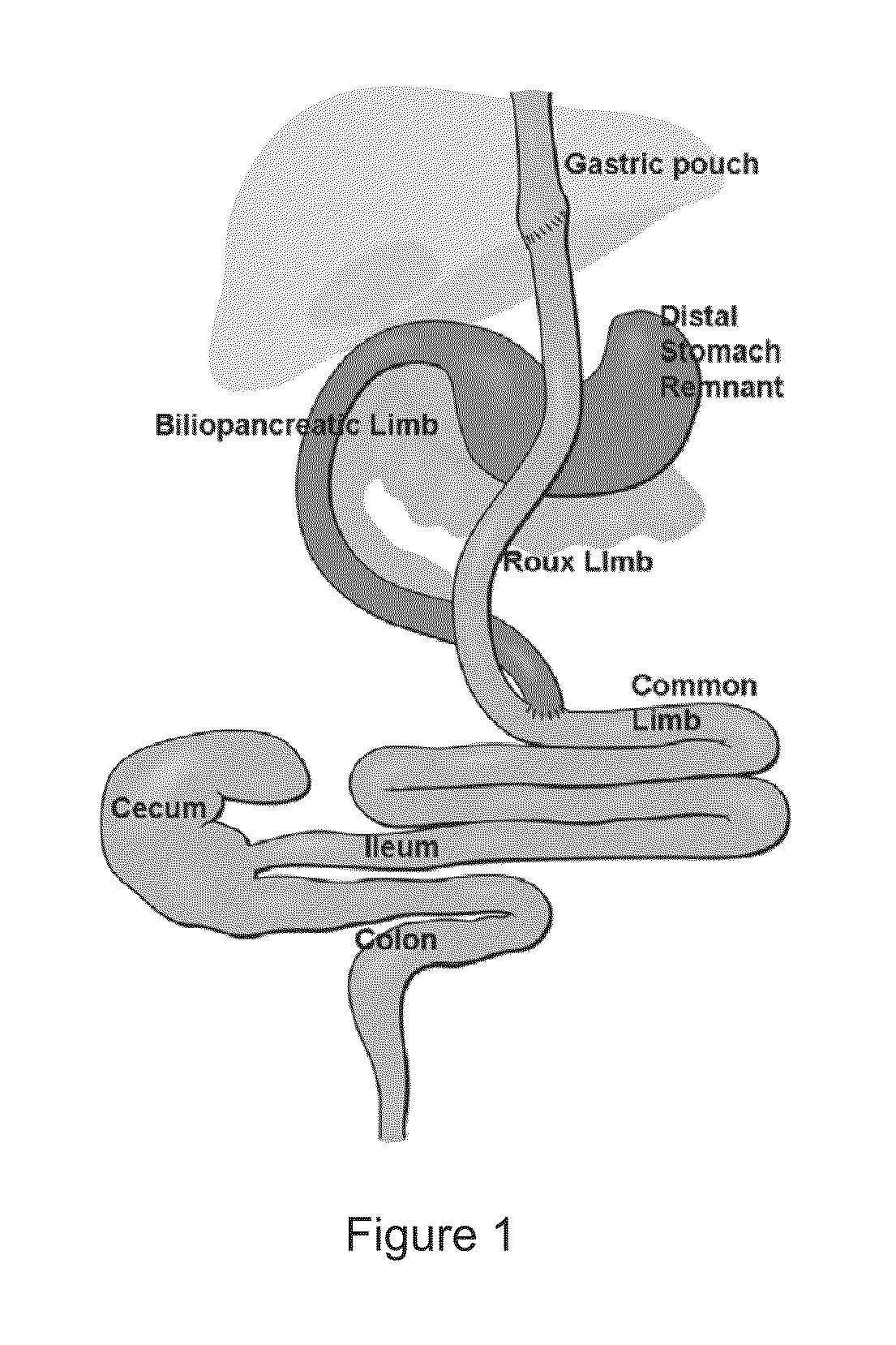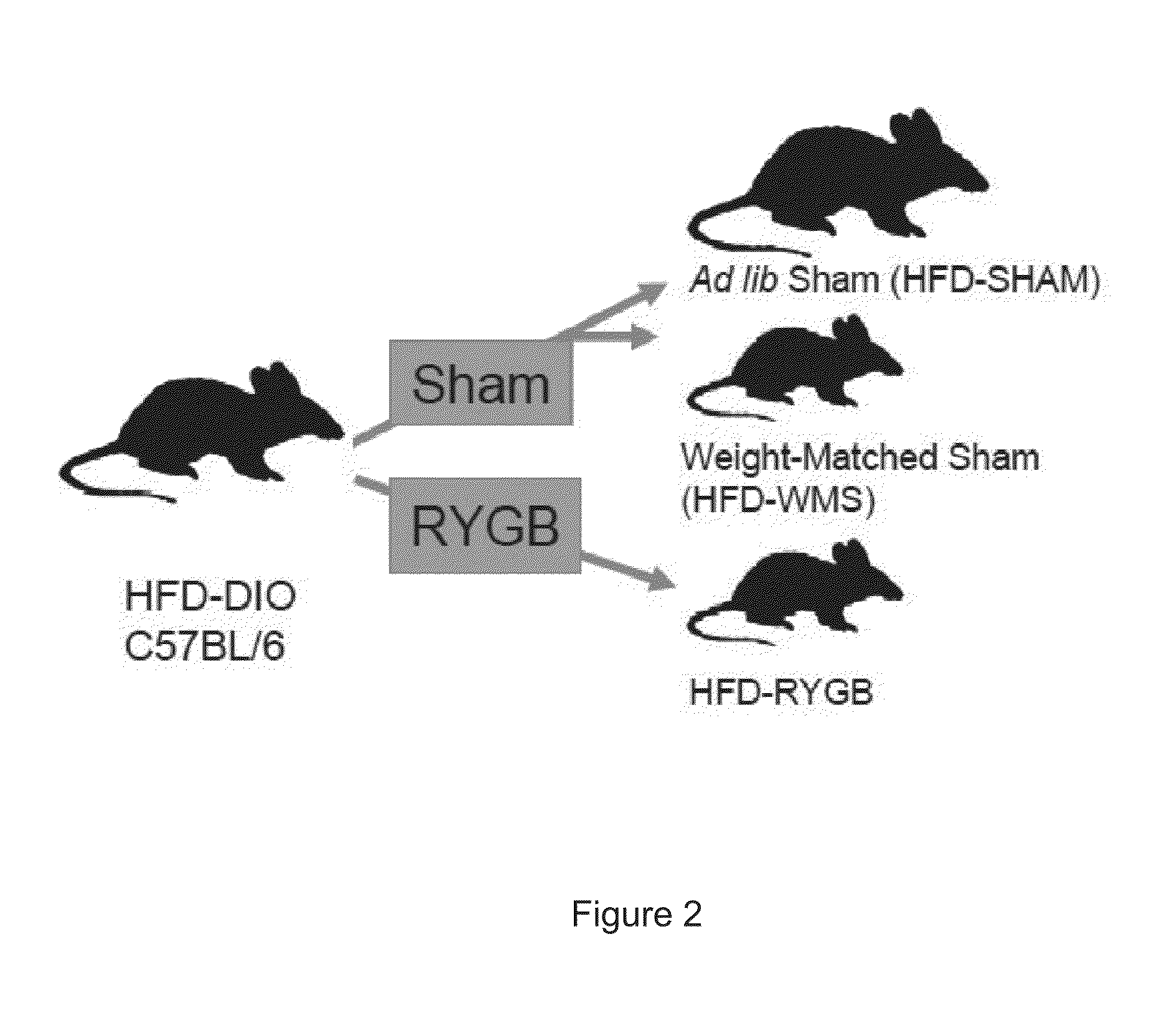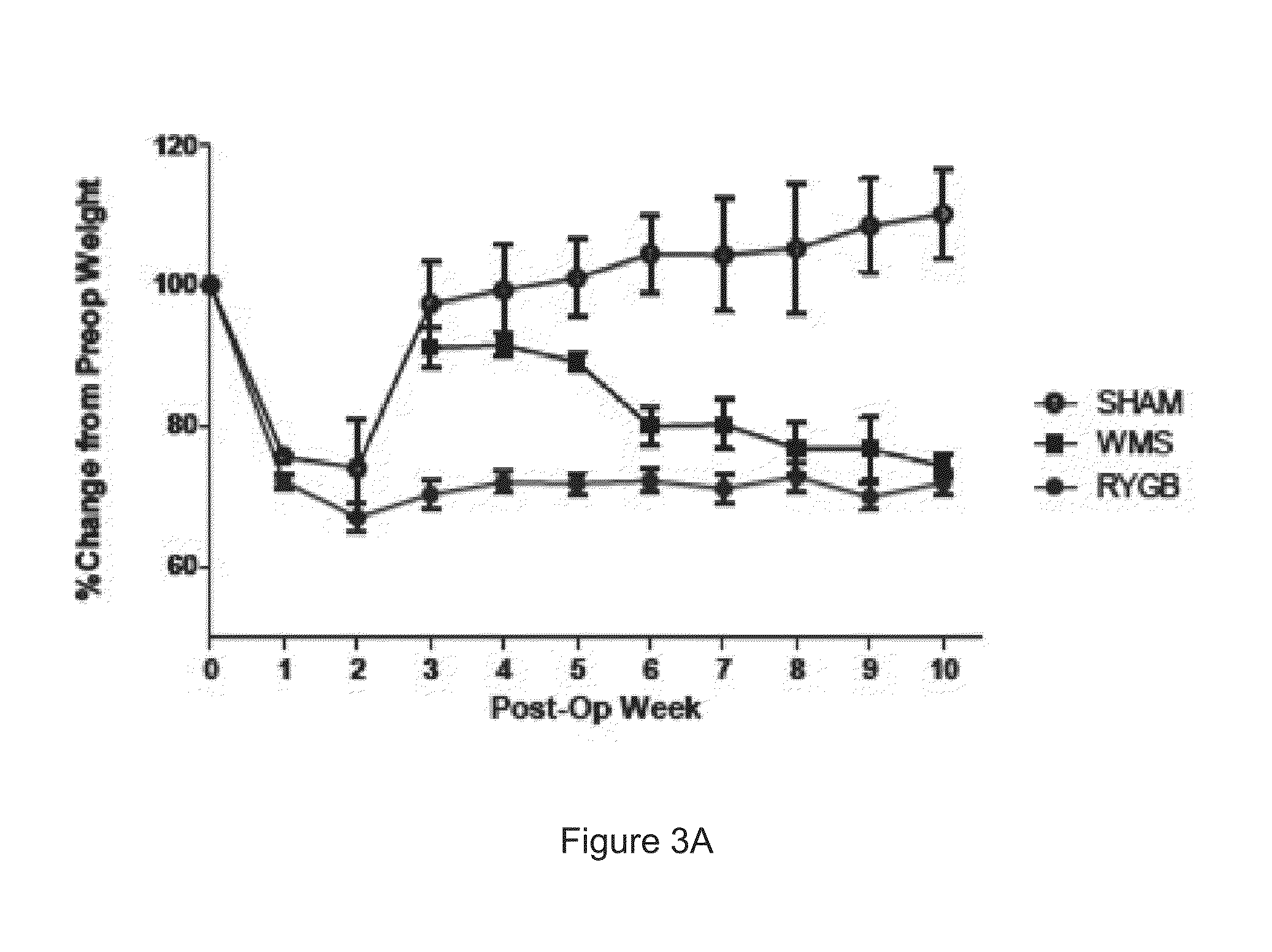Compositions of microbiota and methods related thereto
a technology of microorganisms and compositions, applied in the field of compositions of microorganisms and methods related thereto, can solve the problems of increasing the risk of premature death, requiring long periods of patient recovery, and posing significant risks for severe health problems
- Summary
- Abstract
- Description
- Claims
- Application Information
AI Technical Summary
Benefits of technology
Problems solved by technology
Method used
Image
Examples
example 1
Materials and Methods
[0136]Animals. Male C57BL / 6J diet-induced obese (DIO) mice were purchased at 22-26 weeks of age from Jackson Laboratories. These mice were maintained on a 60% high fat diet (HFD; Research Diets, D12492, New Brunswick, N.J.) from 6 weeks of age until they reached a surgical weight of 40-50 grams. All animal studies were performed in accordance with the Massachusetts General Hospital Subcommittee on Research Animal Care guidelines and used under an approved protocol. Male, age-matched (7-10 weeks old), germ-free Swiss Webster mice were obtained from Taconic and used under an approved Harvard Medical School IACUC protocol.
[0137]Animals in the RYGB group were fasted overnight and anesthetized with isofluorane. The abdomen was exposed and a single transection was made just distal to the ligament of Treitz. The proximal intestinal portion (the biliopancreatic (BP) limb) was re-anastamosed to a jejunal segment ˜9 cm (6 Q-tips) distal to the transection to create the “Y...
example 2
Donor Analysis
[0163]Mice were separated into three groups: animals that underwent surgical gastric bypass and maintained on high fat diet (RYGB), animals that underwent sham surgery and maintained on high fat diet (SHAM), and animals that underwent sham surgery and were weight matched to the RYGB animals (WMS). See FIG. 2.
[0164]Animals were weighed weekly and their weights were compared to pre-operative weights. FIG. 3A shows the percent change of the pre-operative weights for the three groups of mice every week until 10 weeks post-surgery. The weights in the SHAM group steadily increased to greater than pre-surgery weights. RYGB group and WMS group significantly lowered weights post-surgery. The RYGB group decreased to approximately 70% of pre-surgery weights after 2 weeks, whereas the WMS group steadily decreased until 10 weeks post-surgery. Complete weight-matching occurred and was stabilized by 6 weeks post-surgery (3 weeks after food restriction).
TABLE 1One-week food intake and...
example 3
Donor Microbiota Profiles
[0172]Fecal samples were collected post-surgery from animals in the three groups every week to measure temporal effects of gastric bypass on overall microbial diversity. FIG. 8 diagrams the protocol that was used for analysis of the fecal samples.
[0173]The microbial diversity was compared in samples of isolated bacterial DNA obtained from contents of the gastric stomach, distal stomach remnant, BP limb, Rx limb, common limb (first 3 cm distal to BP / Rx anastomosis), the distal ileum, ½ cecum, and colon. Bacterial DNA from the samples was analyzed by an unweighted UniFrac analysis of the principal coordinate (PC) for surgery. FIG. 9 shows the UniFrac-based analysis showing the change in microbial populations in animals before and after RYGB or sham operation. Clustering of the sample coordinates indicates similar microbial ecologies prior to surgery, with a marked shift in the RYGB communities within a week after surgery that continued over time and stabilized...
PUM
| Property | Measurement | Unit |
|---|---|---|
| weight | aaaaa | aaaaa |
| weight | aaaaa | aaaaa |
| temperature | aaaaa | aaaaa |
Abstract
Description
Claims
Application Information
 Login to View More
Login to View More - R&D
- Intellectual Property
- Life Sciences
- Materials
- Tech Scout
- Unparalleled Data Quality
- Higher Quality Content
- 60% Fewer Hallucinations
Browse by: Latest US Patents, China's latest patents, Technical Efficacy Thesaurus, Application Domain, Technology Topic, Popular Technical Reports.
© 2025 PatSnap. All rights reserved.Legal|Privacy policy|Modern Slavery Act Transparency Statement|Sitemap|About US| Contact US: help@patsnap.com



